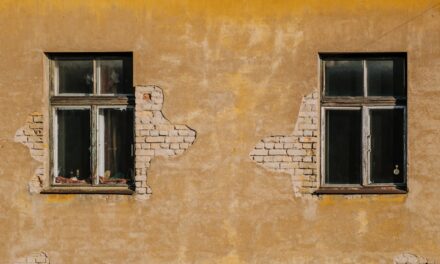Aelbert Cuyp was born in 1620 in Dordrecht, a city in the Netherlands that played a significant role during the Dutch Golden Age. His father, Jacob Cuyp, was a well-known painter and art dealer, which undoubtedly provided Aelbert with an early exposure to the world of art. Growing up in a household steeped in creativity, Cuyp was surrounded by the vibrant artistic culture of his time.
The influence of his father, along with the artistic milieu of Dordrecht, shaped his formative years and laid the groundwork for his future career as a painter. Cuyp’s early life was marked by the rich traditions of Dutch landscape painting, which were evolving rapidly during the 17th century. The works of artists such as Jacob van Ruisdael and Meindert Hobbema would have been part of the visual language that Cuyp absorbed in his youth.
This combination of familial influence and environmental beauty would later manifest in Cuyp’s own distinctive style, characterised by luminous landscapes and a masterful use of light.
Summary
- Aelbert Cuyp was born into a family of artists and was heavily influenced by his father, Jacob Cuyp, who was a landscape painter.
- Cuyp’s artistic style was characterised by his use of light and shadow, creating a sense of atmosphere and depth in his landscapes.
- His preferred techniques included using warm, golden tones and a meticulous attention to detail, particularly in his depictions of animals and rural scenes.
- Cuyp’s subject matter often revolved around pastoral landscapes, seascapes, and rural life, reflecting the tranquillity and beauty of the Dutch countryside.
- Cuyp’s career saw him gain recognition and success, with his work being sought after by prominent collectors and patrons in the Dutch Golden Age.
Artistic Style and Techniques
Aelbert Cuyp is celebrated for his unique approach to landscape painting, which is often distinguished by its warm colour palette and atmospheric effects. His technique involved a careful layering of paint to create depth and luminosity, allowing light to play across the canvas in a way that evokes a sense of tranquillity and harmony. Cuyp’s ability to capture the subtleties of natural light is one of the hallmarks of his work, setting him apart from many of his contemporaries.
In addition to his mastery of light, Cuyp employed a variety of techniques that contributed to the overall composition of his paintings. He often used broad, sweeping brushstrokes to depict the sky and water, while employing finer details for elements such as trees and figures. This contrast between loose and precise brushwork creates a dynamic tension within his landscapes, drawing the viewer’s eye across the canvas.
Cuyp’s innovative use of colour also played a crucial role in his artistic style; he frequently employed warm yellows and soft blues to evoke the golden hour, imbuing his works with a sense of serenity and warmth.
Subject Matter and Themes
The subject matter of Aelbert Cuyp’s paintings primarily revolves around landscapes, often featuring pastoral scenes that reflect the idyllic beauty of the Dutch countryside. His works frequently include elements such as cattle grazing in lush meadows, serene rivers winding through verdant fields, and expansive skies that seem to stretch infinitely. These pastoral themes not only celebrate the natural world but also convey a sense of peace and harmony that resonates deeply with viewers.
Cuyp’s landscapes often incorporate human figures engaged in everyday activities, such as herding cattle or fishing. These figures serve to anchor the viewer within the scene, providing a sense of scale and context. The inclusion of animals, particularly cattle, is a recurring motif in Cuyp’s work, symbolising both the agrarian lifestyle of 17th-century Holland and the artist’s deep appreciation for nature.
Through these themes, Cuyp invites viewers to reflect on their relationship with the land and the simple pleasures found within it.
Development of Cuyp’s Career
Aelbert Cuyp’s career began to flourish in the 1640s when he gained recognition for his landscape paintings. His early works were influenced by the prevailing styles of his contemporaries, but as he matured as an artist, he developed a distinctive voice that set him apart from others in the field. By the 1650s, Cuyp had established himself as one of the leading landscape painters in Holland, attracting patrons from both local and international circles.
Throughout his career, Cuyp’s work evolved significantly. He began to experiment with different compositions and techniques, moving away from traditional representations towards more innovative interpretations of landscape. His travels throughout the Netherlands allowed him to explore various regions and capture their unique characteristics in his paintings.
This exploration not only enriched his artistic vocabulary but also contributed to his growing reputation as a master landscape painter.
Notable Works and Collections
Among Aelbert Cuyp’s most notable works are “The Large Landscape,” “The Cattle Market,” and “The River Landscape.” Each of these paintings exemplifies his mastery of light and composition while showcasing his ability to evoke emotion through landscape. “The Large Landscape,” for instance, features a sweeping vista bathed in golden light, inviting viewers into a serene pastoral scene that feels both expansive and intimate. Cuyp’s works can be found in prestigious collections around the world, including the Rijksmuseum in Amsterdam and the National Gallery in London.
These institutions house some of his most celebrated pieces, allowing art enthusiasts to appreciate his contributions to Dutch art history firsthand. The enduring appeal of Cuyp’s work continues to attract collectors and scholars alike, ensuring that his legacy remains vibrant within the art community.
Impact and Legacy
Aelbert Cuyp’s impact on landscape painting cannot be overstated. His innovative approach to light and colour influenced not only his contemporaries but also generations of artists who followed. The serene beauty and harmonious compositions found in Cuyp’s work set a standard for landscape painting that would resonate throughout art history.
His ability to capture the essence of nature with such sensitivity has left an indelible mark on the genre. Cuyp’s legacy extends beyond his own lifetime; he is often regarded as one of the foremost landscape painters of the Dutch Golden Age. His works continue to inspire artists today, serving as a testament to the enduring power of nature as a subject for artistic exploration.
The themes of tranquillity and harmony found in Cuyp’s landscapes remain relevant, inviting contemporary audiences to engage with the natural world in meaningful ways.
Cuyp’s Influence on Dutch Golden Age Art
During the Dutch Golden Age, Aelbert Cuyp emerged as a pivotal figure within the realm of landscape painting. His innovative techniques and distinctive style contributed significantly to the evolution of this genre during a time when Dutch artists were redefining their relationship with nature. Cuyp’s ability to infuse his landscapes with emotional depth set him apart from many of his contemporaries, influencing not only fellow painters but also shaping public perception of landscape art.
Cuyp’s work exemplified the ideals of Dutch Golden Age art—an emphasis on realism, attention to detail, and an appreciation for everyday life. His landscapes often depicted scenes that resonated with viewers on a personal level, reflecting their own experiences with nature and rural life. This connection between art and audience helped solidify landscape painting as a respected genre within Dutch art history.
Cuyp’s Relationship with Other Artists
Aelbert Cuyp’s relationships with other artists during his lifetime played a crucial role in shaping his artistic development. He was part of a vibrant community of painters in Dordrecht, where he interacted with contemporaries such as Samuel van Hoogstraten and Jan van Goyen. These relationships fostered an environment of collaboration and exchange that enriched Cuyp’s artistic practice.
While Cuyp was influenced by other artists, he also carved out his own unique path within the landscape genre. His ability to synthesise various influences while maintaining a distinct voice allowed him to stand out among his peers. The mutual respect among artists during this period contributed to a flourishing artistic culture that celebrated innovation and creativity.
Recognition and Reception in Cuyp’s Lifetime
During his lifetime, Aelbert Cuyp enjoyed considerable recognition for his work.
The popularity of his landscapes can be attributed not only to their aesthetic appeal but also to their ability to evoke a sense of nostalgia for an idealised rural life.
Cuyp’s reputation extended beyond the borders of the Netherlands; he garnered admiration from collectors across Europe. His works were often included in prestigious exhibitions, further solidifying his status as one of the leading landscape painters of his time. This recognition laid the groundwork for his enduring legacy within art history.
Rediscovery and Appreciation of Cuyp’s Work
Following Aelbert Cuyp’s death in 1691, interest in his work waned for several centuries. However, during the 19th century, there was a resurgence of interest in Dutch Golden Age painters, leading to a rediscovery of Cuyp’s contributions to landscape art. Scholars began to reassess his work within the context of art history, recognising its significance alongside that of other prominent artists from the period.
This renewed appreciation culminated in exhibitions dedicated to Cuyp’s work, allowing contemporary audiences to engage with his masterpieces once more. The revival of interest not only highlighted Cuyp’s technical prowess but also underscored the emotional resonance found within his landscapes. As art historians delved deeper into his oeuvre, they uncovered layers of meaning that had previously gone unrecognised.
Cuyp’s Continuing Influence on Contemporary Art
Aelbert Cuyp’s influence extends far beyond his own era; contemporary artists continue to draw inspiration from his work today. His innovative use of light and colour has informed modern approaches to landscape painting, encouraging artists to explore new ways of representing nature. The emotional depth found in Cuyp’s landscapes resonates with contemporary themes surrounding environmentalism and our relationship with the natural world.
Moreover, Cuyp’s ability to evoke nostalgia through pastoral scenes speaks to current societal yearnings for simplicity and connection with nature amidst an increasingly urbanised world. As contemporary artists grapple with these themes, they often look back to pioneers like Cuyp for inspiration—demonstrating that while centuries may separate them, the dialogue between past and present remains vibrant within the realm of art. In conclusion, Aelbert Cuyp stands as a monumental figure within Dutch art history whose contributions continue to resonate today.
From his early influences to his lasting legacy, Cuyp’s work encapsulates not only the beauty of nature but also our enduring connection to it—a theme that remains ever relevant in contemporary discourse on art and environment alike.
For those interested in exploring the use of light in art, a related article worth reading is Challenging Lighting Conditions: Low Light and High Contrast. This article delves into how artists can work with difficult lighting situations to create striking and dynamic compositions. Aelbert Cuyp, known for his masterful use of light in his landscapes, would surely appreciate the insights shared in this article.


